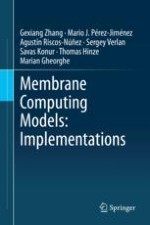The theoretical basis of membrane computing was established in the early 2000s with fundamental research into the computational power, complexity aspects and relationships with other (un)conventional computing paradigms. Although this core theoretical research has continued to grow rapidly and vigorously, another area of investigation has since been added, focusing on the applications of this model in many areas, most prominently in systems and synthetic biology, engineering optimization, power system fault diagnosis and mobile robot controller design. The further development of these applications and their broad adoption by other researchers, as well as the expansion of the membrane computing modelling paradigm to other applications, call for a set of robust, efficient, reliable and easy-to-use tools supporting the most significant membrane computing models. This work provides comprehensive descriptions of such tools, making it a valuable resource for anyone interested in membrane computing models.
